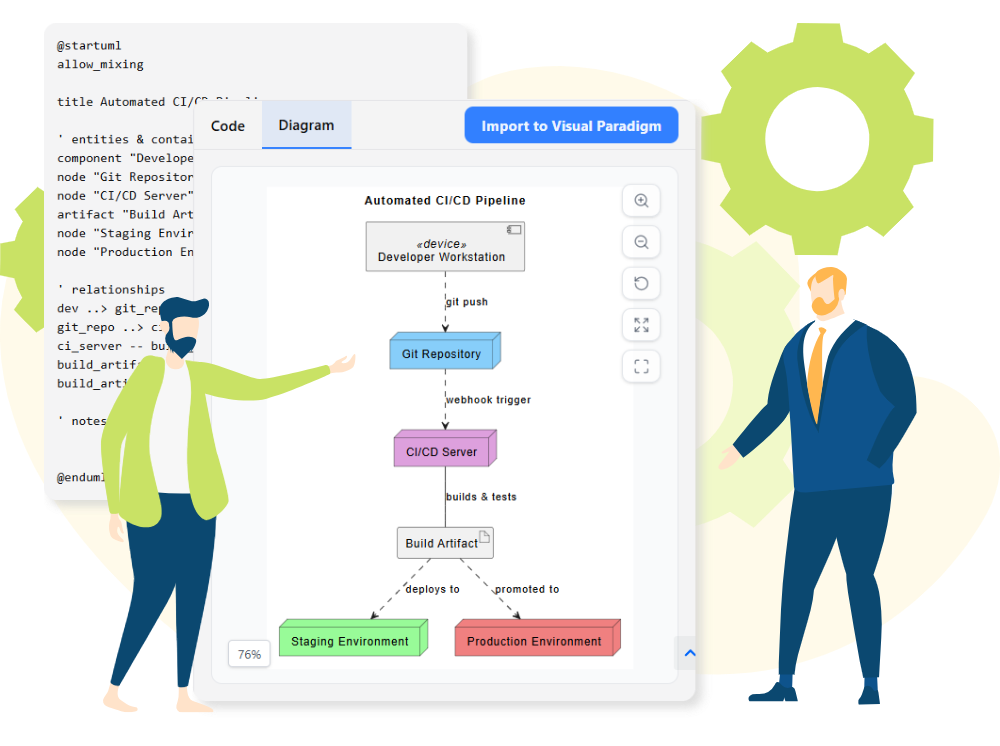Now Reading: How Deployment Diagrams Improve Team Communication and Collaboration
-
01
How Deployment Diagrams Improve Team Communication and Collaboration
How Deployment Diagrams Improve Team Communication and Collaboration
Clear communication is one of the biggest challenges in software projects. Developers, architects, and business stakeholders often use different terms, making it difficult to align expectations.
Deployment diagrams bridge this gap by providing a visual language that everyone can understand. They show how software components interact with hardware, helping both technical and non-technical team members grasp the system’s structure.
What Deployment Diagrams Communicate

Runtime Environment
Show which software components run on which nodes or servers.
Relationships Between Elements
Display how components, devices, and connections work together.
System Boundaries
Define what is inside and outside the deployment environment.
This shared representation reduces misunderstandings and ensures everyone is looking at the same picture.
Benefits for Collaboration
- Architects – Validate system design and check feasibility before implementation.
- Developers – Understand deployment targets and dependencies clearly.
- Project Managers – Gain a high-level view of infrastructure without needing to read technical documentation.
- Stakeholders – See a simplified, visual explanation of how the solution will be deployed.
By offering a common reference point, deployment diagrams encourage alignment across the team.
Why They Matter in Large Teams
In large-scale or distributed teams, miscommunication can lead to duplicated work, incorrect assumptions, or delays. Deployment diagrams provide:
- A single source of truth for technical and non-technical members.
- Easier onboarding for new team members.
- Clearer decision-making during reviews and planning sessions.
Conclusion
Deployment diagrams are more than just a technical tool — they are a communication asset. By presenting a clear, visual representation of the runtime environment, they help architects, developers, and stakeholders collaborate effectively and keep projects on track.

